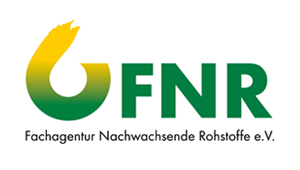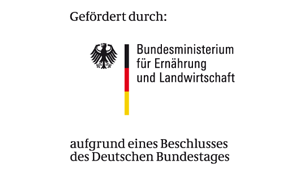Project
Biotechnologically produced D-lactic acid

Biotechnologically produced D-lactic acid
Polylactic acid is a well-known bio-based plastic, which consists mainly of L-lactic acid. We are optimizing the production of D-lactic acid. Only by adding D-lactic acid, polylactic acid with significantly improved properties can be obtained.
Background and Objective
Lactic acid is an important chemical building block that can be synthesized either via a biotechnological fermentation of carbohydrates (sugar, starch) as well as synthetically based on petrochemical raw materials (acetaldehyde). Due to its optical activity lactic acid is present as D-(-) - or L-(+)-lactic acid. The L-form of lactic acid has gained in importance in the last 20 years as feedstock for the poly L-lactic acid (PLLA). This plastic represents a promising material, but the softening temperature of 60 °C is too low for a variety of applications. However the stereocomplexation of PLLA and poly D-lactic acid (PDLA) is of increasing interest, since the softening temperature is about 50 °C higher. Compared to L-lactic acid the research in the field of D-lactic acid gains in importance significantly as a highly productive biotechnological production process has not been established up today. Therefore, the aim of this project is to establish a highly efficient biotechnological process for the production of D-lactic acid. This process has to be performed on inexpensive raw materials available in Germany under market economy and competitive aspects, so that biotechnological produced D-lactic acid is available to the market as a feedstock for bioplastics.
Approach
The project extends from low cost raw materials available in Germany via bioconversion to enantiomer pure D-lactic acid. Among other, special emphasis is the comprehensive analysis of the substrates and especially the supplines in terms of their composition and influence on the D-lactic acid production. Based on these findings, a process optimization with intelligent fermentation strategy will be conducted to yield highly pure D-lactic acid produced biotechnologically at low costs.
Data and Methods
Currently the usage of expensive complex media components is essential for the biotechnical D-lactic acid production. In this project, yeast extracts and hydrolysates are analyzed in detail with suitable analytical methods for their composition. After completion of the analysis, an evaluation of the results is carried out by cluster analysis. Based on these findings, a process optimization will be performed in parallel operated bioreactors, where the process-relevant parameters such as temperature, pH, and dissolved oxygen will be measured and controlled.
Our Research Questions
In this project, the influence of yeast extract, which currently represents one of the largest cost factors of the fermentation, are examined and replaced by low cost supplines. A detailed analysis is intended to clarify which components of the yeast extract have inhibiting or beneficial effects on the process. Furthermore a process optimization regarding media composition (C-source, salts, supplines, neutralizing agents, nitrogen sources) and physical parameters (pH, T, DO) are carried out in order to increase the understanding of the bioconversion to D-lactic acid.
Results
In the field of biotechnological production of L-lactic acid, there are numerous studies and publications on the producing strains both in batch, fed-batch and continuous processes, especially at high cell density, including the use of immobilization.
In contrast, very limited information is available for the biotechnological production of D-lactic acid, despite the growing interest in the microbial production. It is expected that within the eligibility period of this project, a highly efficient and easy to handle reproducible process for D-lactic acid production can be established, which will be of high scientific value and industrial interest. Then the established process allows efficient production of the stereocomplexation of PLLA and PDLA. Due to its higher softening temperature, further applications will be opened as bioplastics in the field of automotive, electrical and household equipment industry.
Thünen-Contact

Duration
6.2012 - 5.2015
More Information
Project funding number: 22037711
Funding program: FNR
Project status:
finished
Publications on the project
- 0
Brock S, Kuenz A, Prüße U (2019) Impact of hydrolysis methods on the utilization of agricultural residues as nutrient source for D-lactic acid production by sporolactobacillus inulinus. Fermentation 5(1):12, DOI:10.3390/fermentation5010012
- 1
Kuenz A, Klotz S, Kaufmann N, Prüße U, Vorlop K-D (2017) Biotechnologically produced D-lactic acid - starting material for biopolymers. J Biotechnol Biomat 7(3,Suppl.):30
- 2
Klotz S, Kuenz A, Prüße U (2017) Nutritional requirements and the impact of yeast extract on the D-lactic production by Sporolactobacillus inulinus. Green Chem(19):4633-4641, DOI:10.1039/c7gc01796k
- 3
Kuenz A, Klotz S, Kaufmann N, Vorlop K-D (2016) Abschlussbericht zum Vorhaben (Biotechnisch erzeugte D-Milchsäure) : Laufzeit des Vorhabens: 01.06.2012 - 15.09.2015 ; Berichtszeitraum: 01.06.2012 - 15.09.2015. Braunschweig: Thünen-Institut, 72 p
- 4
Klotz S, Kaufmann N, Kuenz A, Prüße U (2016) Biotechnological production of enantiomerically pure d-lactic acid. Appl Microbiol Biotechnol 100(22):9423-9437, DOI:10.1007/s00253-016-7843-7

![[Translate to English:] [Translate to English:]](/media/_processed_/3/6/csm_Hintergrund-Ausschnitt1_9daaef6b89.jpeg)
![[Translate to English:] [Translate to English:]](/media/_processed_/3/6/csm_Hintergrund-Ausschnitt1_0bd7111163.jpeg)







